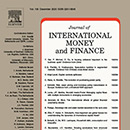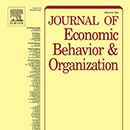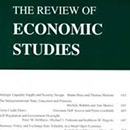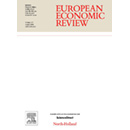Featured Publications
Economic Journal (forthcoming)
School’s author: John Gathergood
“Right to Buy” (RTB), a large-scale natural experiment whereby incumbent tenants in public housing could buy properties at heavily-subsidised prices, increased the UK homeownership rate by over 10 percentage points between its 1980 introduction and the 1990s. This paper studies the impact of this reform on crime by leveraging exogenous variation in eligibility for the policy. Results show that RTB generated significant property crime reductions. Behavioural changes of incumbent tenants and renovation of public properties were the main drivers of this crime reduction. This is evidence of a novel means by which subsidised homeownership and housing policy can reduce criminality.
Games and Economic Behaviour (2022)
School’s author: Simon Gaechter
We study two generic versions of public goods problems: in Provision problems, the public good does not exist initially and needs to be provided; in Maintenance problems, the public good already exists and needs to be maintained. In four lab and online experiments (n=,105), we document a robust asymmetry in preferences and perceptions in two incentive-equivalent versions of these public good problems. We find fewer conditional cooperators and more free riders in Maintenance than Provision, a difference that is replicable, stable, and reflected in perceptions of kindness. Incentivized control questions administered before gameplay reveal dilemma-specific misperceptions but controlling for them neither eliminates game-dependent conditional cooperation, nor differences in perceived kindness of others' cooperation. Thus, even when sharing the same game form, Maintenance and Provision are different social dilemmas that require separate behavioral analyses.
Journal of the American Statistical Association (2022)
School’s author: Lorenzo Trapani
We study inference on the common stochastic trends in a non-stationary, N-variate time series yt, in the possible presence of heavy tails. We propose a novel methodology which does not require any knowledge or estimation of the tail index, or even knowledge as to whether certain moments (such as the variance) exist or not, and develop an estimator of the number of stochastic trends m based on the eigenvalues of the sample second moment matrix of yt.
We study the rates of such eigenvalues, showing that the first m ones diverge, as the sample size T passes to infinity, at a rate faster by O(T)O(T) than the remaining N – m ones, irrespective of the tail index. We thus exploit this eigen-gap by constructing, for each eigenvalue, a test statistic which diverges to positive infinity or drifts to zero according to whether the relevant eigenvalue belongs to the set of the first m eigenvalues or not. We then construct a randomised statistic based on this, using it as part of a sequential testing procedure, ensuring consistency of the resulting estimator of m. We also discuss an estimator of the common trends based on principal components and show that, up to a an invertible linear transformation, such estimator is consistent in the sense that the estimation error is of smaller order than the trend itself.
Importantly, we present the case in which we relax the standard assumption of i.i.d. innovations, by allowing for heterogeneity of a very general form in the scale of the innovations. Finally, we develop an extension to the large dimensional case. A Monte Carlo study shows that the proposed estimator for m performs particularly well, even in samples of small size. We complete the paper by presenting two illustrative applications covering commodity prices and interest rates data.
Journal of Political Economy (2023)
School’s authors: Giovanni Facchini and Cecilia Testa
The Voting Rights Act of 1965 redefined race relations in the United States. Yet, evidence on its effect on black office-holding remains scant. Using novel data on black elected officials between 1962-1980, we assess the impact of the VRA on the racial make-up of local governments in the Deep South. Exploiting predetermined differential exposure of Southern counties to the mandated federal intervention, we show that the latter fostered local black office-holding, particularly in the powerful county commissions, controlling local public finances. In the presence of election by district, covered counties experienced black representation gains and faster capital spending growth.
Review of Economics and Statistics (2022)
School’s author: Alejandro Graziano
In this paper, we estimate the trade effects of a transit system upgrading that streamlines border processing in developing countries. Our empirical approach combines transaction level export data from El Salvador with unique data that distinguishes export flows that were processed on the transit system. Our results indicate that the new transit system lowered regulatory border costs and raised exports. At the low end, our back-of-the-envelope estimate of the return to investment is US$ 3-to-1. This evidence informs a policy covered by the 2013 WTO Agreement of Trade Facilitation.
Games and Economic Behavior (2022)
School’s author: Daniel Seidmann
Is it better to present evidence first or second in trials if witnesses cannot lie, and the litigants share all available witnesses? We address this question by defining preferences over playing games via their equilibrium correspondences. Exploiting this partial ordering over games, we show that litigants cannot prefer to lead, but can prefer to follow; the judge/jury may also prefer some litigant to lead, but only if the litigants each prefer to follow. Allowing a litigant to choose whether to lead after observing the available witnesses does not benefit either that litigant or the judge/jury.
Journal of Development Economics (2022)
School’s author: Devesh Rustagi
There is astounding variation in product quality sold in markets even when quality is difficult to ascertain and rules are poorly enforced. We investigate whether sellers differ in innate honesty (incur private cost to provide good quality) and whether this explains the variation in quality. Our study takes place in milk markets in India, where milkmen collude on price, customer rarely switch, and it is difficult to establish reputation. We invite milkmen to take part in a novel behavioural experiment to measure dishonesty. We then measure quality objectively as the percentage of water added to a litre of milk sold to customers.
Our results show that dishonest milkmen add significantly more water to milk. Evidence from milk-testing tournament confirms that milk quality is difficult to verify. These results suggest that some sellers are willing to forego monetary gains to provide good quality in return for utility from being honest, even in an environment that encourages cheating.
Journal of Money, Credit and Banking (2022)
School’s author: Lorenzo Trapani
Very little is known on how traditional risk metrics behave under intraday trading. We fill this void by examining the finiteness of the returns' moments and assessing the impact of their infinity in a risk management framework. We show that when intraday trading is considered, assuming finite higher order moments, potential losses are materially larger than what the theory predicts, and they increase exponentially as the trading frequency increases-a phenomenon we call superkurtosis. Hence, the use of the current risk management techniques under intraday trading impose threats to the stability of financial markets, given that capital ratios may be severely underestimated.
European Economic Review (2022)
School’s author: Sourafel Girma
Posner hypothesised that the legalisation of assisted suicide may substitute for unassisted (unregulated) suicide. We test predictions arising from this hypothesis using data from US states that have legalised assisted suicide. Event study regression estimates provide strong evidence that legalisation of assisted suicide is associated with an increase in total suicides, especially for females and older people. There is some evidence that assisted suicide laws are also associated with a smaller increase in unassisted suicide, though the statistical significance is weaker than for total suicides. Results using the synthetic control method (SCM) are generally consistent with the regression estimates. Overall the US experience to date provides little evidence in support of the Posner substitution hypothesis.
European Economic Review (2022)
School’s authors: Markus Eberhardt and Daniel Seidmann
I motivate and empirically investigate differential long-run growth effects of democratisation across countries. While the existing literature recognises the potential for such heterogeneity, empirical implementations to date unanimously assume a common democracy-growth nexus across countries. Adopting novel methods for causal inference in policy evaluation I relax this assumption to confirm that in the long-run democracy has a positive average effect on per capita income of around 10%, adopting a range of alternative definitions for regime change in the form of binary indicators. Guided by existing hypotheses, additional analysis probes the patterns of the heterogeneous 'democratic dividend' across countries. A second common feature of this literature as well as cross-country growth empirics more generally is the absence of concerns for sample selection or influential observations. I carry out two rule-based robustness exercises to demonstrate that my empirical findings are highly robust to substantial changes to the sample.
Journal of Economic History
School's author: Valeria Rueda
We offer new evidence on the spatial economic impact of Italian unification. Adopting municipal population as a proxy for local economic activity, we construct a new geocoded dataset spanning the pre- and post-unification periods, and discover robust evidence of an acceleration in growth near the former borders. A disproportionate improvement in market access boosted growth in these locations when barriers to trade were dismantled. Indirectly, unification’s decisive contribution to intraregional market integration, local specialisation and exchange, and economic development is revealed.

Journal of International Money and Finance (2022)
School’s author: Kevin Lee
A ‘meta’ model of the exchange rate combines a range of models distinguished by the drivers of the rate and by regime duration. Alternative model weights are proposed, including those obtained from a novel non-nested hypothesis-testing technique that accommodates periods of stability and slowly-evolving or abruptly-changing regimes involving multiple drivers.
Focusing on density forecasts, the meta models perform well, demonstrating that all the sets of fundamentals considered can be useful for forecasting when the model is estimated over an appropriate time frame, but that the ability to exploit the changing relevance of different sets of fundamentals over time is important too.
Journal of Development Economics (2022)
School’s author: Devesh Rustagi
There is astounding variation in product quality sold in markets even when quality is difficult to ascertain and rules are poorly enforced. We investigate whether sellers differ in innate honesty (incur private cost to provide good quality) and whether this explains the variation in quality. Our study takes place in milk markets in India, where milkmen collude on price, customer rarely switch, and it is difficult to establish reputation. We invite milkmen to take part in a novel behavioural experiment to measure dishonesty. We then measure quality objectively as the percentage of water added to a litre of milk sold to customers.
Our results show that dishonest milkmen add significantly more water to milk. Evidence from milk-testing tournament confirms that milk quality is difficult to verify. These results suggest that some sellers are willing to forego monetary gains to provide good quality in return for utility from being honest, even in an environment that encourages cheating.

Journal of Economic Behavior and Organization (2022)
School’s author: Simon Gaechter

Review of Economic Studies (2021)
School’s author: Adam Spencer
This paper develops a quantitative open economy framework with dynamics, firm heterogeneity and financial frictions to study the impact of corporate tax reforms targeted at multinationals. The model quantifies their impact on firm selection, production and welfare. Firms draw idiosyncratic shocks, invest in capital, choose optimal financing and select endogenously into selling abroad, through exporting or FDI.
I apply this framework to the removal of the U.S. repatriation tax as in the Tax Cuts and Jobs Act. The reform’s impact trades-off two selection effects — more offshoring versus greater U.S. business dynamism. The reform leads to higher U.S. welfare at little cost to the Treasury. A series of exercises illustrate that the novel features of this framework have significant quantitative implications. The reform gives starkly different cross-sectional predictions and lower welfare gains when financial frictions are removed and it is welfare reducing in a static counterpart of the model.
Games and Economic Behavior (2021)
School’s author: Simon Gaechter
We study how compliance with norms of pro-social behaviour is influenced by peers' compliance in a dynamic and non-strategic experimental setting. We show that social proximity among peers is a crucial determinant of the effect. Without social proximity, norm compliance erodes swiftly because participants only conform to observed norm violations while ignoring norm compliance. With social proximity, participants conform to both types of observed behaviours, thus halting the erosion of compliance.
Our findings stress the importance of the broader social context for norm compliance and show that, even in the absence of social sanctions, norm compliance can be sustained in repeated interactions, provided there is group identification, as is the case in many natural and online environments.

Journal of Economic Behavior and Organization (2021)
School’s authors: Trudy Owens and Fabio Tufano
Using the Krupka-Weber norm-elicitation technique in a lab-in-the-field experiment in rural Kenya, we measure the social norms that regulate the trade-off between wealth accumulation through saving and sharing income with kin and neighbours. We find a plurality of norms: from a strict sharing norm prohibiting any form of wealth accumulation to a norm that allows moderate wealth accumulation. We show that several individual and social network characteristics predict the norms perceived and that the pro-saving norm becomes majoritarian when an individual can conceal their income from kin and neighbours.
In further exploratory analysis, we find some evidence that the type of norm individuals perceive mediates the effect of income secrecy on actual saving behaviour. Taken together, our results highlight the importance of measuring social norms when devising pro-saving policy interventions.

European Economic Review (2022)
School’s author: Giovanni Facchini
Is opposition to immigration deeply entrenched or is it open to updating in the face of new information? We explore this question by examining how attitudes of native citizens shift following exposure to information that points to potential upsides of immigration. We do so using a large-scale randomised experiment embedded in a text-comprehension study administered in Japan.
As part of the study, participants were subtly presented with information on social and economic problems that immigration could help address (eg growing elderly population that requires care, labour shortage in certain sectors). Depending on the treatment, information exposure increased support for a more open immigration policy and motivated pro-immigration political action. Notably, effects persisted 10–12 days after the intervention. The results suggest that information campaigns can lessen public opposition to immigration.

European Economic Review (2022)
School’s author: Lorenzo Trapani
This paper provides a simple, yet reliable, alternative to the (Bayesian) estimation of large multivariate VARs with time variation in the conditional mean equations and/or in the covariance structure. The original multivariate, n-dimensional model is treated as a set of n univariate estimation problems, and cross-dependence is handled through the use of a copula. This makes it possible to run the estimation of each univariate equation in parallel. Thus, only univariate distribution functions are needed when estimating the individual equations, which are often available in closed form, and easy to handle with MCMC (or other techniques). Thereafter, the individual posteriors are combined with the copula, so obtaining a joint posterior which can be easily resampled. We illustrate our approach using various examples of large time-varying parameter VARs with 129 and even 215 macroeconomic variables.

Journal of Economic Behavior and Organization (2021)
School’s author: Maria Montero
The unravelling prediction of disclosure theory relies on the idea that strategic forces lead firms (information senders) to voluntarily disclose information about the quality of their products provided the information disclosed is verifiable and the costs of disclosure are negligible. This theoretical prediction requires that consumers (information receivers) hold correct beliefs about non-disclosed information and, in equilibrium, treat all non-disclosed information with extreme scepticism. Previous research finds that receivers are insufficiently sceptical, or in other words are naive, about non-disclosed information, which leads to the failure of unravelling.
This paper examines the extent to which naivety responds systematically to features of the decision environment, namely the availability of opportunities to communicate with others (Consultation treatment) and the context of the experimental setting (Context treatment, based on hygiene ratings). We find that complete unravelling fails to occur in all our treatments. Receiver's beliefs and guesses about non-disclosed information are similar across the Consultation and Context treatments relative to the Baseline implying that receivers are naive about non-disclosed information under naturalistic features that exist in field settings. We also find that senders are partly to blame for the lack of unravelling, as intermediate types would gain from disclosing more often given the observed receiver behaviour.